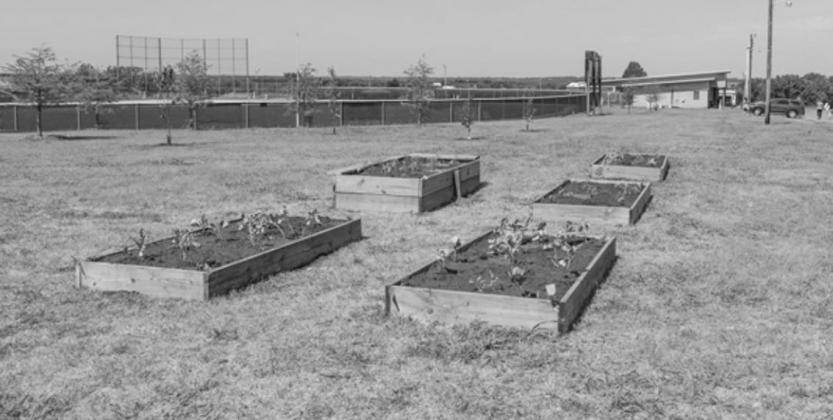STILLWATER, Okla. – Gardeners are counting the days until they can get back to tending their landscapes without the need for hot chocolate breaks. While Oklahoma still has a few cold weeks until gardening season traditionally takes off, gardeners can keep themselves busy building raised garden beds.
The idea behind raised bed gardening isn’t complicated: It’s an area that is elevated anywhere from a few inches up to 2 or 3 feet above the soil level, said David Hillock, Oklahoma State University Extension consumer horticulturist.
“The options for raised-beds are limited only by your imagination. They can be as simple as a rectangular plateau of soil or a more elaborate bed framed in sturdy material,” Hillock said. “Not only can they add visual interest to your landscape, raised bed gardens also have several other benefits, especially for landscapes with poor soil quality and poor drainage.”
Gardeners tend to reap higher yields because raised beds allow more space for growing plants. In addition, gardeners will enjoy better soil since amendments and fertilizer are applied only to the growing area. Hillock said there’s little need to rototill, and the soil drains better. As an added bonus, plants grown close together will shade the soil, which decreases evaporation and keeps roots cooler.
Raised bed gardens also are great for people with physical limitations. If built tall enough, the beds eliminate the need to weed on hands and knees, and harvesting is easier. Raised beds can be accessed from all open sides, which is useful for gardeners who use assistive walking devices.
“Raised-bed gardens allow gardeners to get outside a bit earlier in the season because the soil warms up faster and can be worked sooner than traditional beds,” he said. “Rainy weather is less of a deterrent for working in the garden because mud won’t be an issue. Another benefit is plants planted closely together in a raised bed helps keep weeds crowded out.”
As for pests, raised beds can be covered with insect screening fabric. Crop rotation is easier, which helps mitigate the attraction of plant-specific species.
While a raised bed can be nearly any shape, Hillock recommended a maximum width of about 4 feet to ensure gardeners can reach the back side if the bed is adjacent to a structure.
Before gardening enthusiasts get started building a raised bed, there are a few things to consider:
For best light exposure, build beds in a north/south orientation.
Make sure paths between the beds are wide enough to walk comfortably, push a wheelbarrow or accommodate a walking device or wheelchair.
Before construction, stake out beds and walk through them to make sure it’s a workable arrangement.
Decide whether an unframed or framed bed best suits your needs. For an unframed bed, eliminate weeds and turf first, then dig a furrow on both sides of the area and pull up the soil around the edges to create a mound.
If building with wood or other hard materials, level the area and put the frame in place before preparing the soil. In addition to treated lumber or landscape timbers, concrete blocks, rocks or bricks, snap-together plastic blocks, hay bales and recycled materials can be used.
“Be creative with your materials for the beds and the plants you select. Raised beds are a great way to add visual interest and texture into your landscape,” Hillock said.
Casey Hentges, host of the popular Oklahoma Gardening show, demonstrates an easy and inexpensive way to construct a raised-bed garden.
More gardening information is available on OSU Extension’s website.

